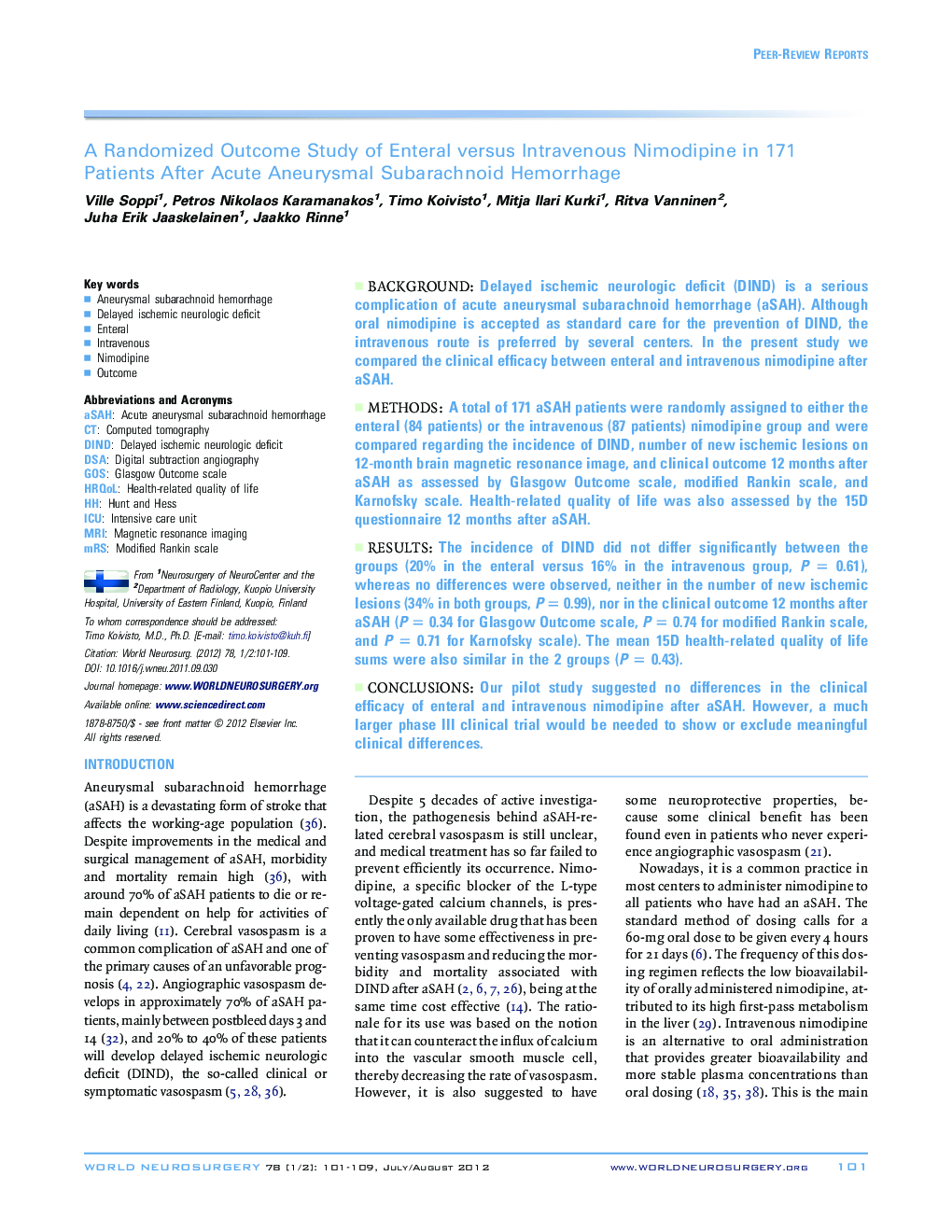| Article ID | Journal | Published Year | Pages | File Type |
|---|---|---|---|---|
| 3096740 | World Neurosurgery | 2012 | 9 Pages |
BackgroundDelayed ischemic neurologic deficit (DIND) is a serious complication of acute aneurysmal subarachnoid hemorrhage (aSAH). Although oral nimodipine is accepted as standard care for the prevention of DIND, the intravenous route is preferred by several centers. In the present study we compared the clinical efficacy between enteral and intravenous nimodipine after aSAH.MethodsA total of 171 aSAH patients were randomly assigned to either the enteral (84 patients) or the intravenous (87 patients) nimodipine group and were compared regarding the incidence of DIND, number of new ischemic lesions on 12-month brain magnetic resonance image, and clinical outcome 12 months after aSAH as assessed by Glasgow Outcome scale, modified Rankin scale, and Karnofsky scale. Health-related quality of life was also assessed by the 15D questionnaire 12 months after aSAH.ResultsThe incidence of DIND did not differ significantly between the groups (20% in the enteral versus 16% in the intravenous group, P = 0.61), whereas no differences were observed, neither in the number of new ischemic lesions (34% in both groups, P = 0.99), nor in the clinical outcome 12 months after aSAH (P = 0.34 for Glasgow Outcome scale, P = 0.74 for modified Rankin scale, and P = 0.71 for Karnofsky scale). The mean 15D health-related quality of life sums were also similar in the 2 groups (P = 0.43).ConclusionsOur pilot study suggested no differences in the clinical efficacy of enteral and intravenous nimodipine after aSAH. However, a much larger phase III clinical trial would be needed to show or exclude meaningful clinical differences.
